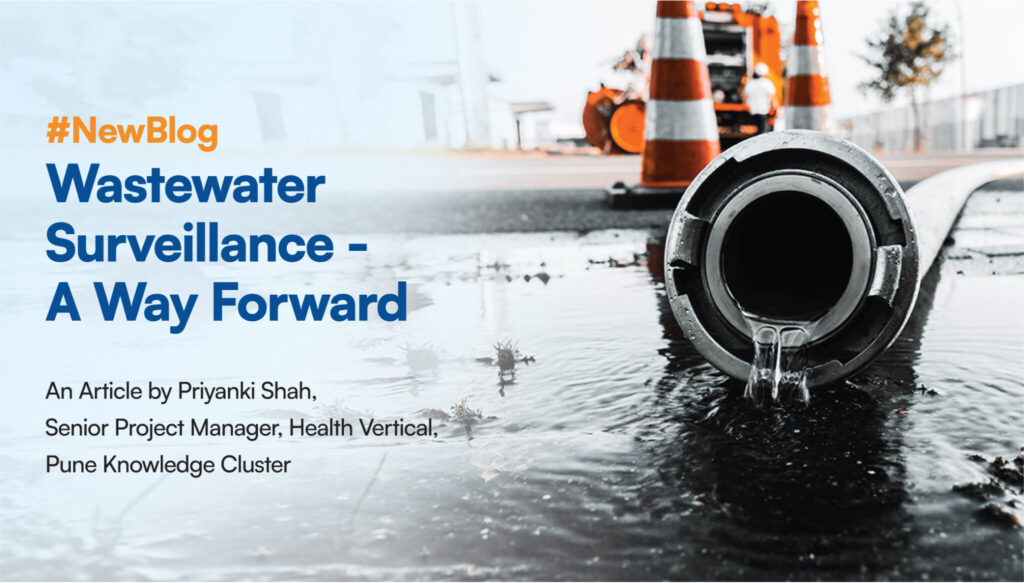
Wastewater surveillance (WWS) is a method that analyses pooled community wastewater through the organised sewage system or the unorganised drains and nalas for pathogen detection within a population. Disease surveillance in India through wastewater was initiated in Mumbai for Polio in 2001[1]. In this exercise, a systematic wastewater analysis was conducted to study the prevalence of the disease in India. More recently, the machinery detected one case of vaccine-derived polio virus-type 1 from a sewage sample collected from Kolkata in April 2022[2]. The emergence of SARS-CoV-2 and the emphasis on public health machinery to respond and find methodologies through which the virus can be tracked in the city/country supported the uptake of WWS. The ability to quantify the virus in wastewater and compare clinical cases helped provide the government with a week to 10-day lead time. WWS also helped the governments gauge the number of asymptomatic patients, which would be most certainly missed in clinical testing unless unbiased clinical sampling was done. For instance, in a study at CSIR- National Chemical Laboratory, analysis of their campus WWS showed the presence of signature mutation of the Omicron variant as early as Nov 2022[3].
Add Your Heading Text Here

Image Source:- Pune Knowledge Cluster
The pathogens in wastewater are detected by testing for their nucleic makeup in the sewage. The standard procedure is wastewater sample collection, nucleic acid extraction and amplification, followed by its testing to quantify pathogens with PCR-based methods or NGS used for variant detection. Given the nature of wastewater, the number of human and animal microbes, and many other components that end up in wastewater, the noise is significant. There is no standard methodology for disease detection, and more importantly, the lack of global and regional standards that identify a gold standard in testing creates hurdles in interpretation. Data standardisation in WWS is another obstacle. Systematic access to the wastewater samples is also dependent on permissions from the governments, and accessibility to the Sewage Treatment Plants in many Indian cities poses challenges.
WWS in India in times of COVID-19 – a case study
The first successful detection of SARS-CoV-2 in India through wastewater was in Ahmedabad, Gujarat, in May 2020 from a Civic Hospital[4]. In the last four years, it has been adopted by several cities and by governmental agencies in India. INSACOG (Indian SARS-CoV-2 Genomics Consortium), in 2022, extended their genomic database to include data collected through wastewater surveillance. Detecting the virus in wastewater gave decision-makers a lead time of 10-14 days. This time is vital for public health authorities to re-look at priorities, reallocate human resources and alert the medical fraternity. There is a need, however, to make systematic correlations to clinical cases. WWS especially showed significance in identifying silent waves of COVID-19.
The potential of WWS
Post-COVID, there has been an international effort to leverage this cost-effective, non-invasive method of measuring disease incidence for many other diseases. Recently, a study in Ontario, Canada, used WWS for Respiratory Syncytial Virus (RSV). Quantification of the RSV in wastewater gave them a 12-day lead time to reduce the RSV burden, influence regional health system preparedness and understand variations in the community as novel RSV vaccines and monoclonal antibodies were used to reduce disease burden.[5] WWS has recently also been used extensively for the testing of Antimicrobial Resistance (AMR). Wastewater is considered a significant reservoir of AMR and studies have shown that the treatment of the sewage water doesn’t remove antibiotics, Antibiotic-resistant bacteria (ARBSs) and antibiotic-resistant genes (ARGs), causing havoc downstream[6]. Recent studies have focused on using WWS for quantifying AMR gene abundance, AMR distribution in reference to seasons and geographic presence and association with clinical samples[7]
